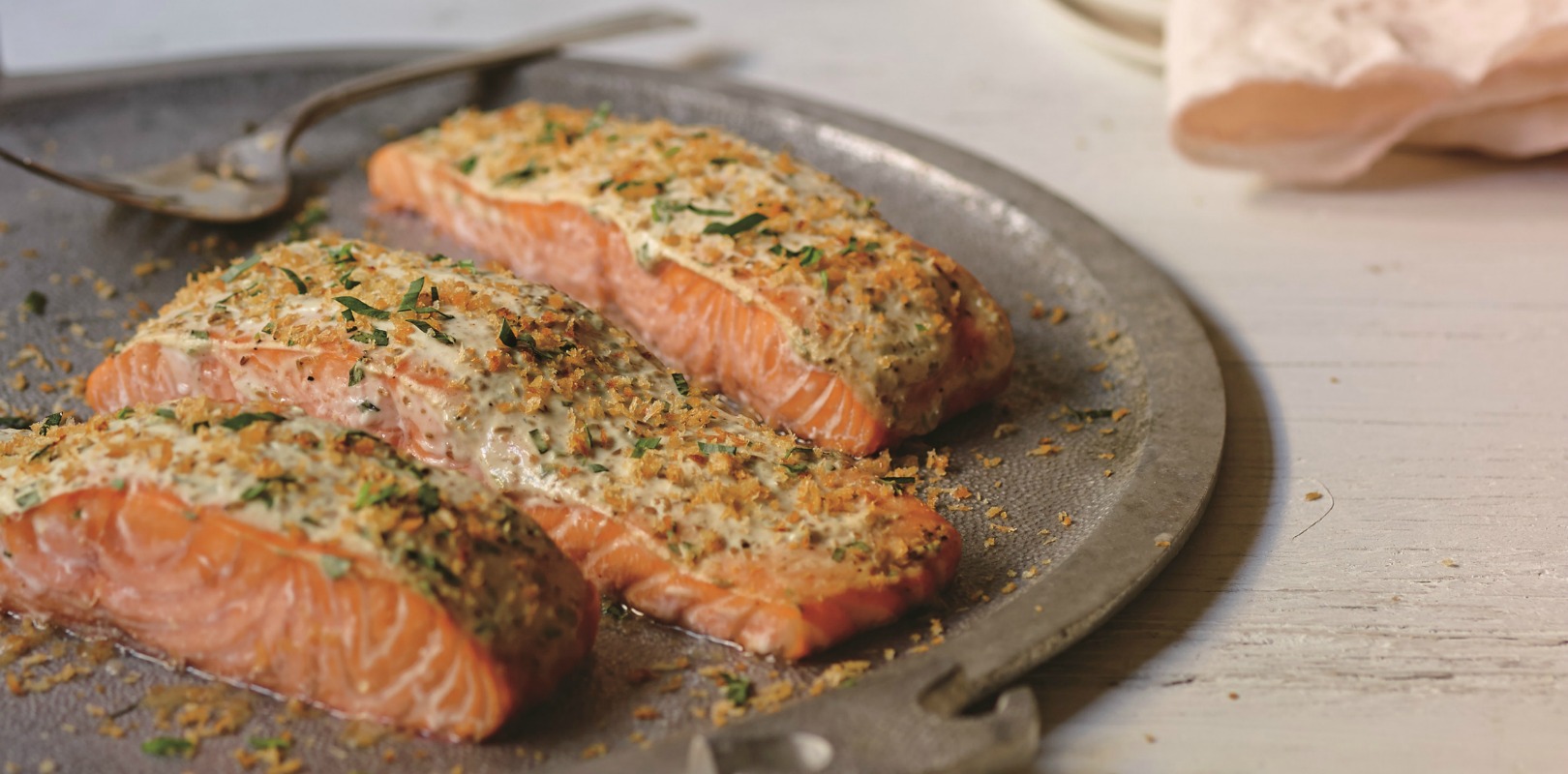Fennel seeds and fresh tarragon quietly infuse a yogurt marinade in this delicate fish supper. After it has spent a few hours in the fridge, slide the salmon into the oven and stir together the golden bread-crumb topping. You’ll be rewarded with a meal completely out of proportion to the amount of effort expended.
Ingredients
Serves 6 to 8
- 1 tablespoon fennel seeds
- ½ teaspoon kosher salt
- ⅛ teaspoon freshly ground pepper
- ½ cup plain yogurt (not Greek), preferably whole-milk
- 1½ teaspoons Dijon mustard
- 1 teaspoon white wine vinegar
- 1 tablespoon plus 1 teaspoon minced fresh tarragon
- 6 to 8 (5- to 6-ounce or 140 to 170 g) wild salmon fillets, 1 inch thick, or 1 (2- to 2½-pound or 900 g to 1,3 kg) salmon fillet (see Yo!), pin bones removed
- 1½ tablespoons extra-virgin olive oil
- ¾ cup panko bread crumbs
Marinate the salmon
In a spice grinder or with a mortar and pestle, grind the fennel seeds, salt, and pepper together until powdery. Transfer to a small bowl. Whisk in the yogurt, mustard, vinegar, and 1 teaspoon of the tarragon. Line a baking sheet with parchment. Place the salmon on the parchment and spread the yogurt marinade thickly and evenly over the top. Refrigerate, covered, for 2 to 4 hours.
Bake the salmon
Preheat the oven to 375°F (190°C), with a rack in the center position. Bake the salmon until cooked through but still moist, about 15 minutes for individual fillets or 20 minutes for one large fillet.
Make the topping
While the fish bakes, or just after you pull it from the oven, heat the oil in a small skillet over medium heat. Add the panko. Season generously with salt and pepper and cook, stirring, until golden. Remove from the heat and stir in the remaining 1 tablespoon tarragon.
Serve
Sprinkle the panko over the salmon and serve.
Yo!
If you don’t have a spice grinder or a mortar and pestle, bash the cooled, toasted fennel seeds in a zip-top bag with a meat mallet. This dish is equally elegant with a single 2- to 2½-pound fillet you portion out after baking. If baking a large fillet, you’ll have one thinner end that’s flakier and better done and one thicker end that’s rarer. This is ideal for diners with different taste preferences. I like my salmon pretty rare. You can also use salmon steaks, if you like.
If you can get your hands on Alaskan king salmon—a high-oil variety also called Chinook—I recommend it because of its rich flavor and texture. Sockeye and coho will also taste great, but you’ll want to check for doneness a few minutes earlier so the salmon doesn’t dry out. This is especially important if your fillets are less than 1 inch thick.



